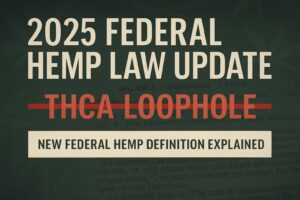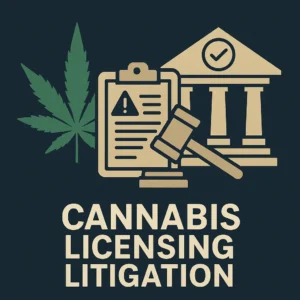Have you ever contemplated the true value of a whispered secret? In the business realm, whispers transform into confidential strategies binding success.
Crafting a fortress around your proprietary knowledge is indispensable—confidentiality agreements serve as the bedrock protecting your competitive edge.
Essentials of Confidentiality Agreements
Confidentiality agreements, often known as nondisclosure agreements or NDAs, are legal contracts enforcing the protection of sensitive information shared between parties. They dictate terms such as the scope of the confidential information, obligations of the receiving party, and the duration of the secrecy obligation. Diligently drafting these agreements is crucial to ensuring that trade secrets, innovative processes, and other intellectual property remain shielded from competitors.
A robust confidentiality agreement should address potential breaches and specify remedies, including injunctions and damages. It should also outline scenarios necessitating disclosure, such as legal processes or regulatory requirements, to provide clarity and preempt misunderstandings that could jeopardize the protective veil of your business’s crucial information.
Defining Confidential Information
Identifying what constitutes confidentiality is a foundational step—a prerequisite—to crafting a solid confidentiality agreement.
About 85% of a company’s value is derived from its intangible assets, making protection vital.
Delineating the scope of confidential information requires precision; it encompasses proprietary knowledge, business strategies, and sensitive data that must remain undisclosed.
Striking a balance is key—overly broad definitions of confidentiality can stifle collaboration, whereas narrow ones may leave critical assets exposed to risk.
Identifying Parties and Obligations
It is imperative to clearly articulate who is bound by the confidentiality agreement. This typically involves the disclosing party, such as the business owner or entity holding the sensitive information, and the receiving party, who is being granted access to the confidential material under strict conditions. Additionally, affiliates or representatives of the receiving party may also be included within the scope of the agreement to ensure comprehensive coverage.
Clarity governs the obligations prescribed.
Obligations must be delineated with unmistakable clarity. These contractual duties involve safeguarding confidential information, restricting its use exclusively for the agreed-upon purpose, and preventing unauthorized disclosure. The agreement should lay out these duties in explicit terms to eliminate any potential ambiguity.
Effective agreements preclude inadvertent breaches.
Strategies include ongoing compliance education—failure to educate can lead to costly slips.
Comprehensiveness ensures a fortified legal posture.
Should disputes arise, meticulously detailed responsibilities documented in the confidentiality agreement provide a formidable defense. Such documentation should anticipate various scenarios, integrating protocols for the return or destruction of confidential information upon the agreement’s conclusion or in the event of termination.
Duration and Termination Clauses
Precision in defining the timeframe of confidentiality is crucial to its enforceability. The commencement and expiration of a confidentiality agreement frame the period during which the information must be protected.
It is common for agreements to have a fixed term, which may extend several years post-disclosure. However, some sensitive information warrants protection indefinitely, mandating careful articulation of such terms to ensure legal soundness.
When drafting termination clauses, consider circumstances that may precipitate a premature end to the agreement. Changes in business relationships, market dynamics, or regulatory environments can necessitate provisions for early termination.
Provisions for renewal are equally important, allowing parties to reassess and extend their commitments as circumstances evolve. Automatic renewal clauses may be inserted, but should include clear opt-out mechanisms to prevent unintended extensions.
Lastly, robust termination clauses delineate processes for the handling of confidential material post-termination. Procedures for the return or destruction of information must be outlined to safeguard against residual breaches.
Legally Enforcing Confidentiality
When a breach of a confidentiality agreement occurs, swift and decisive legal action is necessary to mitigate damage. Parties to the agreement should be well-versed in the recourse available to them, which may include seeking injunctive relief to prevent further disclosures or pursuing damages for losses incurred. The explicit articulation of remedies within the agreement fortifies its enforceability and signals the seriousness with which breaches will be treated.
The threat of legal enforcement acts as a deterrent, but its effectiveness hinges on the precision of the agreement’s language. A well-drafted confidentiality agreement will clearly define what constitutes confidential information, the obligations of the receiving party, and the consequences of non-compliance. In litigation, the strength of a confidentiality agreement is paramount, and the burden falls on the claimant to demonstrate how the breach contravenes the precisely hashed-out terms stipulated therein.
Breach Consequences
A confidentiality agreement breach can lead to significant legal and financial repercussions for the offending party.
-
Injunctions: Courts may grant an order halting further misuse of confidential information.
-
Damages: Financial compensation for direct and consequential losses can be pursued.
-
Equitable Remedies: Such as orders for the return or destruction of confidential information.
-
Litigation Costs: The breaching party may be responsible for the legal expenses incurred.
-
Reputational Harm: Loss of trust and business reputation may ensue, resulting in decreased business opportunities.
The enforcing party may seek redress through litigation or arbitration, depending on the provisions of the agreement.
A well-calibrated agreement provides clarity on the scope and scale of potential consequences, underscoring the gravity of a breach.
Dispute Resolution Methods
When disputes arise, delineating the available dispute resolution mechanisms is imperative.
Comprehensive confidentiality agreements will usually delineate the dispute resolution processes, ranging from mediation and arbitration to litigation. By specifying the preferred method for addressing disagreements, parties may avoid costly and time-consuming litigation, instead opting for alternative dispute resolution mechanisms that can provide a more expedient resolution.
In certain scenarios, mediation serves as the first recourse. This non-binding process involves a neutral third party who facilitates discussions between disputing parties, aiming to reach a voluntary, mutually satisfactory resolution. Though not legally enforceable, mediation outcomes can often be captured in a binding settlement agreement.
Alternatively, arbitration can be stipulated as the method for resolving disputes under confidentiality agreements. This binding process involves arbitrators—neutral third-party decision-makers—who render a decision after examining evidence and hearing arguments. Arbitration clauses can stipulate procedures that may be less formal than court proceedings, allowing for a potentially swifter resolution that remains private, thus preserving the secrecy of the confidential information in question.
Benefits to Your Business
Confidentiality agreements are bulwarks against the unauthorized dissemination of your business’s sensitive information. Whether protecting trade secrets, customer databases, or innovative processes, these legal instruments secure your competitive advantage by ensuring privately held information remains solely within your organization. This exclusivity fosters a secure environment for innovation and strategic planning.
Moreover, the presence of confidentiality agreements can be highly persuasive in potential partnerships or business deals, acting as a token of trust and seriousness. Your partners are more likely to engage in open yet secure dialogues, leading to deeper collaboration and shared success. By setting such professional standards, your enterprise enhances its reputation as a prudent and reliable operation, further solidifying its stature in the industry.
Safeguarding Trade Secrets
Trade secrets are the lifeblood of innovation and competitiveness in business.
-
Define Clear Boundaries: Establish what constitutes a trade secret within your organization.
-
Implement Access Controls: Limit access to trade secrets to essential personnel only.
-
Educate Your Workforce: Ensure employees understand the importance and legal implications of safeguarding trade secrets.
-
Update Security Measures: Regularly review and enhance physical and digital protections surrounding confidential information.
-
Use NDAs Strategically: Employ Non-Disclosure Agreements (NDAs) judiciously to create legal barriers to unauthorized disclosure.The unauthorized disclosure of trade secrets can permanently damage a business’s market position. A robust strategy for protecting trade secrets mitigates risks and preserves the integrity and value of your business’s innovations.
Fostering Trust with Partners
The cornerstone of any strategic partnership is mutual confidence, underpinned by comprehensive confidentiality agreements. Such legal instruments form the bedrock of collaborative endeavors, ensuring that exchanged proprietary information remains secure.
In the nuanced tapestry of business alliances, confidentiality agreements are the threads that strengthen trust. They signal a commitment to honor shared secrets and protect mutual interests, laying a foundation for successful synergy. With legally binding confidentiality promises in place, partners can more freely discuss strategies, share sensitive data, and collaborate on innovation without fear of compromising competitive advantages.
Moreover, these agreements serve as a testament to the level of trustworthiness each entity brings to the table. As stewards of sensitive information, businesses enforce confidentiality to prove their reliability. This assurance facilitates a climate conducive to open dialogue and fosters an environment where strategic planning thrives, safe from the prying eyes of competitors.
Ultimately, by engendering a secure framework for information exchange, confidentiality agreements empower partners to fully engage and innovate. They allow for a candid exchange of ideas and insights necessary for growth and competitive edge – without the underlying risk of valuable data leakage. Such legal constructs not only protect but also enhance the bonds of partnership, forming an invaluable asset in the business arena.
Customizing Agreements
In crafting a confidentiality agreement, it is essential to tailor provisions to the specific needs of your business. Factors such as industry sector, type of information, and the duration for which it must remain confidential should shape the context of the clauses. This targeted approach ensures that the document reflects the unique aspects of your operations and guards against generic vulnerabilities that may not provide adequate protection.
Properly structured agreements are dynamic instruments that adapt to your company’s evolving landscape. They are fine-tuned to address potential threats unique to your business model and anticipate shifts in market conditions or technology, thereby preserving your competitive edge and securing your proprietary interests.
Industry-Specific Considerations
In the healthcare sector, for instance, confidentiality agreements must be meticulously aligned with HIPAA regulations, securing patient data and fostering a culture of privacy protection that is non-negotiable.
Technology firms with proprietary algorithms or coding need ironclad clauses to prevent intellectual property theft and safeguard their innovative edge.
Financial institutions require confidentiality agreements that address fiduciary duties and the sensitive nature of client financial data, often bound by industry-specific legal mandates.
Manufacturers might stipulate non-disclosure of supply chain specifics, production techniques, or unique component formulations to ensure industry competitiveness remains uncompromised.
Real estate transactions may hinge on the discreet handling of strategic development plans, negotiations, and proprietary market analysis, making robust confidentiality protocols essential to maintaining an advantage.
Finally, the entertainment industry often leans on confidentiality agreements to shield project details, creative content and the personal affairs of high-profile clients from public exposure and potential exploitation.
Tailoring Clauses to Business Needs
Confidentiality agreements must be meticulously crafted to align with the unique risks and needs of your business.
-
Specification of Confidential Information: Clearly define what constitutes confidential material, tailored to your company’s operations, products, or services.
-
Duration of Confidentiality: Establish the time frame for which the information must remain private, which may vary based on the nature of the information or business practices.
-
Permitted Disclosures: Outline scenarios where information sharing is allowed, such as with legal counsel or for certain business transactions, with strict protocols.
-
Obligations upon Termination: Specify the procedures for information handling and destruction when the agreement ends or a relationship is terminated.
-
Remedies for Breach: Detail the consequences of violating the agreement, including potential damages, to deter misuse and provide a clear path for legal recourse.
A one-size-fits-all approach does not apply when securing the lifeblood of your enterprise.
Adapting the confidentiality agreement to your operational landscape is paramount; it’s a strategic shield protecting your competitive position.
About the Author
Tom Howard, Cannabis Industry Lawyer and Consultant has practiced commercial law since 2008 when he graduated law school and got his Series 7 & 66 Securities licenses. He pivoted to practicing litigation for financial institutions before helping cannabis teams form, capitalized and get licensed. He has concentrated in cannabis business since Illinois legalized in 2019. He won licenses for clients in Illinois, Connecticut, New Jersey, New Mexico, Massachusetts, Missouri and has gotten into lotteries in Ohio, Maryland and Maine. He became a Certified Ganjier in 2021. He chairs the ISBA’s section council for Cannabis Law in 2023.




